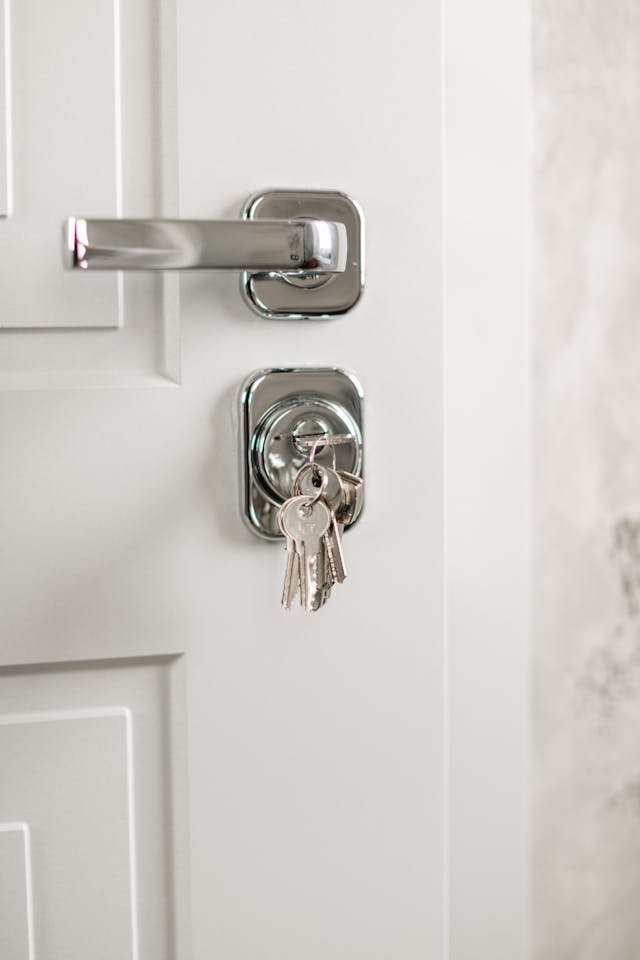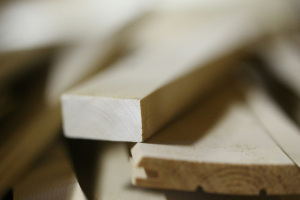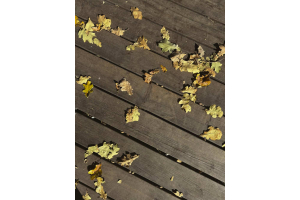
When it comes to hanging a door, there are various materials that you will need to complete the job successfully.
To hang a door in an existing frame, you will need the following tools and materials:
New door
Tape measure
Pencil
Hammer & chisel
Drill & screwdriver
Hinges (typically 3 for a full-size door)
Screws (1¼" to 3")
Level
Utility knife
Wood block planes are optional and shims may be needed, but aren’t always essential.
Step-by step: How to hang a door
Screw hinges firmly into the mortises cut on the edge of the door. Use long screws (2–3”) for the top hinge to anchor into the stud and help prevent sagging in the long run.
Carefully place the door inside the frame, using wedges under it to keep it steady. Make sure that the door is centred with even gaps of around ⅛” all around.
- Tip: Use a pry bar or wedge to raise the door slightly off the ground while positioning it in the frame. This helps you achieve even gaps and keeps the door steady as you work.
Once the door is in position, mark where the hinge plates and the door meet. Drill pilot holes and screw your hinges securely into the frame; start with one screw per hinge to test how it will fit.
Open and close the door several times to check it’s opening smoothly. If the door sticks or the gaps are uneven, adjust the hinge screws. Once it’s perfect, tighten all the screws fully.
How to Fit a Door
What’s the difference between hanging and fitting a door?
Fitting comes before hanging; it involves trimming and adjusting the door so that it properly fits the frame.
Hanging the door is the attachment of the door to the frame using hinges so that it opens and closes.
How Tall is a Door?
The standard height for both internal and external doors is around 1981mm or 6 feet 6 inches in the UK.
That being said, taller doors of 2040mm or 6 feet 8 inches are becoming increasingly more popular in homes with higher ceilings.
This is just a benchmark, doors can come in different heights depending on application or the height of ceilings.
Step-by-Step Guide: How to Fit a Door
Accurately measure the height, width, and thickness of the door frame, before comparing with the new door to identify any areas where trimming is needed.
Using a circular saw or hand plane, carefully trim the edges. Only trim the bottom and sides, and leave small clearance gaps of about 2mm on the sides and top and 5 to 10mm at the bottom.
Use the old door or frame as a template to mark where the hinges should go on the new door. Typically, hinges should be placed about 150mm from the top and 230mm from the bottom, with an optional third hinge in the middle.
Use a chisel or router to cut shallow mortises and make sure the hinges sit flush to allow the door to close.
How to Fit Door Handles, Latches & Locks
Once your door is hung and moves smoothly, it’s time to fit the latch and handles. Thankfully, this is the easiest and arguably the most fun and rewarding part.
Mark the handle height. Standard height is around 1 metre from the floor. Mark this on both sides of the door for accuracy.
Position the latch. Hold it against the edge of the door in line with your mark. Draw around the faceplate and mark the latch hole centre.
Drill the latch hole. Use a 25mm flat wood bit, drilling straight into the edge to the full depth of the latch body.
Drill the spindle hole. Transfer the latch’s centre point to the face of the door and drill through from both sides to avoid splintering.
Chisel the recess. Cut a shallow outline so the latch plate sits flush with the door edge.
Fit the latch and handles. Slot the latch in, screw it in place, then attach both handles using the supplied fixings.
Install the strike plate. Close the door, mark where the latch tongue meets the frame, and chisel a recess for the strike plate before screwing it in.
Tip: Most handle sets include a paper or plastic template, use it for marking drill points precisely. Always drill halfway from each side to prevent wood damage.
Finishing Up
Hanging, fitting and painting a door takes a bit of patience, but it’s a job most people can tackle with the right tools and guidance. Take your time with each step and check your alignment as you go, the result will be a door that fits neatly and works smoothly for years to come.
For your next project, you can find everything you need, from doors to hinges and hardware, at Parr Rochdale. Any questions, please contact the team.




